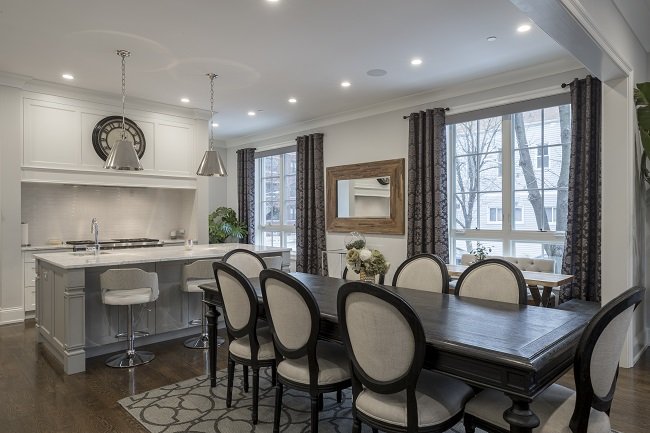When it comes to brightening up your home, electric rooflights are an excellent choice. They don’t just add a touch of elegance; they also let in natural light, helping to create a more welcoming and vibrant space. But with so many options out there, choosing the right electric rooflight can be a bit of a puzzle. Fear not! We’re here to guide you through the process, ensuring you pick the perfect one for your home.
Understanding the Basics of Electric Rooflights
First things first, let’s talk about what electric rooflights are. Essentially, they’re windows installed in your roof, but with a twist—they can be operated electronically. This means you can open and close them with the push of a button, often via a remote control or a wall-mounted switch. They come in various styles, sizes, and functionalities, making them suitable for different parts of your home, from living rooms to bathrooms.
Why Choose Electric Rooflights?
Before diving into the specifics, it’s good to understand why electric rooflights are a fantastic option.
- Convenience – Imagine not having to climb on a chair or use a pole to open your rooflight. With electric options, you can control them effortlessly, even if they’re in hard-to-reach places.
- Enhanced Ventilation – Electric rooflights can help regulate the temperature in your home. On a warm day, opening them allows hot air to escape, making your space cooler without relying solely on air conditioning.
- Security – Many electric rooflights come with advanced security features, such as automatic locking when closed. Some even have rain sensors that close the window automatically when they detect rain, protecting your home from unexpected weather changes.
Types of Electric Rooflights
Now that you’re sold on the idea, let’s explore the different types of electric rooflights available.
Fixed vs. Opening
Fixed Rooflights don’t open and are primarily for allowing natural light into the room. They’re ideal if ventilation isn’t a priority and are often used in spaces like stairwells or above dark corridors.
Opening Rooflights can be opened either partially or fully, providing both light and ventilation. These are great for kitchens and bathrooms, where air circulation is crucial.
Ventilation Options
If you opt for opening rooflights, consider the type of ventilation system:
- Manual Ventilation – While not common in electric models, some offer a manual override in case of power failures.
- Automated Ventilation – This feature allows you to program the rooflight to open and close at specific times, providing regular ventilation without any effort on your part.
Choosing the Right Size
When it comes to rooflights, size matters. The size of your electric rooflight will depend on the room size, the roof’s structure, and how much natural light you want to let in. A larger rooflight will provide more light but may require structural adjustments to your roof.
Tip: Consult a professional to ensure your roof can support the weight and size of the rooflight you choose.
Glass Options
The type of glass used in your rooflight can make a big difference in performance and comfort.
- Double or Triple Glazing – These options provide better insulation, keeping your home warmer in winter and cooler in summer.
- Low-E Glass – This type of glass has a special coating that reflects heat, helping to maintain a comfortable temperature inside your home.
- Tinted or Frosted Glass – If privacy is a concern, tinted or frosted glass is an excellent choice, especially for bathrooms or bedrooms.
Additional Features to Consider
- Blinds and Shutters – Some electric rooflights come with integrated blinds or shutters. These can be controlled electronically, providing additional privacy and light control.
- Smart Home Integration – If you’re a tech enthusiast, look for rooflights compatible with smart home systems. This allows you to control them via your smartphone or voice commands.
- Rain and Wind Sensors – As mentioned earlier, rain sensors are a fantastic feature for automatically closing your rooflights during inclement weather. Wind sensors can also close the rooflight if high winds are detected, preventing damage.
Installation and Maintenance
Once you’ve chosen your electric rooflight, proper installation is crucial. It’s not just about cutting a hole in the roof and placing the rooflight—there are waterproofing and insulation considerations to ensure it performs well and lasts long.
Professional Installation – Always opt for professional installation. They have the expertise to ensure the rooflight is installed correctly, preventing leaks and other issues.
Maintenance Tips:
- Regularly clean the glass to keep it clear and bright.
- Check the seals and weatherproofing to ensure no leaks develop over time.
- If your rooflight has a rain sensor, make sure it’s functioning correctly by testing it occasionally.
Cost Considerations
The cost of electric rooflights can vary significantly based on size, features, and materials. While it’s tempting to go for the cheapest option, remember that this is a long-term investment in your home’s comfort and value. Investing in a high-quality rooflight can save you money in the long run by reducing energy costs and increasing your home’s value.
Budgeting Tips:
- Set a budget that includes the cost of the rooflight and installation.
- Consider energy savings when calculating the total cost.
- Don’t forget to factor in any additional features like blinds or smart home integration.
Bringing It All Together
Choosing the best electric rooflight for your home involves considering many factors, from the type and size to the glass and additional features. It’s not just about aesthetics—it’s about functionality, convenience, and enhancing your living space.
Electric rooflights offer a blend of modern technology and practicality, making them a worthy addition to any home. Whether you’re looking to brighten a dark room, improve ventilation, or simply add a touch of elegance, there’s an electric rooflight that fits your needs.


